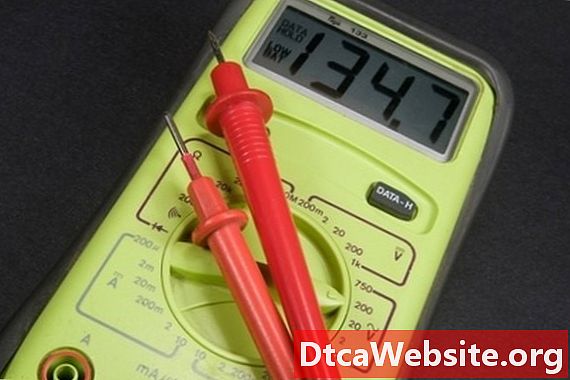
Contenu

Chevrolet trucks are famous for durability and service, but this doesnt mean there wont be a time when something goes wrong. Modern trucks, with internal computerized diagnostic systems, shut down to prevent engine damage or prevent the engine from starting if a system is not operating properly. This article highlights the most-common problems and some simple steps to get your Chevy truck up and running.
How to Troubleshoot Chevy Truck Problems
Step 1
Check Recall Announcements: Faulty parts may be the cause of your problem. All trucks, regardless of manufacturer or model, have had parts recalled. Some recalls are more critical than others for keeping the truck in service. The National Highway Traffic Safety Administration is the official U.S. government office in charge of recalling trucks and issuing technical service bulletins. Check the model Chevy truck from the free NHTSA service available at nhtsa.dot.gov. Investigate the "Defect Investigations" section, since a recall may soon be issued. Read additional details regarding the recall at AutoRecalls.us (see links in Resources).
Step 2
Note Engine Lights: Chevrolet trucks are constructed with a quick diagnostic system that runs when the engine is started. If lights come on (or do not go out after the start up), note the shape of the light or the code that is shown. The most common problems indicated by the lights and translations for the codes are listed in the Chevrolet owners manual. If manual is missing, check online by searching under "Chevrolet Truck" and "Error Code (and the number)." If nothing comes from this search, the problem is most likely something a mechanic will need to repair.
Step 3
Pay Attention to Engine Noises: Turn the engine off and restart the engine to determine if the sound is a regular feature or just a one-time event. If the sound is still there, open the hood and listen to see what part of the engine is making the noise. Sounds from belts are easy to hear and locate. Radiator noise is also obvious. If you are not familiar with the engine structure, use the engine schematic chart located in the back of the truck owners manual.
Isolate the Specific Problem: A few of the most common problems include: 1. Truck Wont Start: Check the gas gauge to make sure there is fuel. Check the instrument panel to see if gauges register. If these are flat, the problem is in the electrical system or the battery. The problem may also be in the fuel system. Look also at the truck distributor and clean off the spark plugs and wires. 2. Shudder or Hesitation When Accelerating: Avoid inexpensive fuel in extremely cold weather since the octane rating isnt high enough for the truck to function properly in freezing temperatures. Allow time for the engine to warm up before quick acceleration. The shudder may also be caused by obstructions in the fuel line. Try changing the fuel filter to correct this problem. Also, confirm that the problem is not with the catalytic converter. Many states require checks every year or two, but if the truck is new or over four years old, this unit may be the cause of this problem. 3. Acceleration Surge While Driving or with Starting: Pull over to the side of the road and examine the accelerator. Check the floor mat to make sure it hasnt moved up under the accelerator pedal. Some trucks have been recalled as a result of acceleration surge problems; confirm the truck is not in this group by checking the website listed in Step 1 of the first section of this article. 4. Problems in Manual Shifting between Gears: If this problem happens when the engine is warm, install a new filter and change the transmission fluid. For shifting issues while starting, avoid driving the truck as regular transportation but take it in for a diagnostic test. 5. Misfiring: Change the spark plugs and wires. Check the sensors to make sure the data sent is correct.
Tip
- Several national parts chains offer free diagnostic testing that provides the engine problem code. If the truck runs, check to see if one of these stores is located nearby and take it to be diagnosed. The code will offer a starting point to correcting the problem.
Warning
- Never drive your truck when serious problems are suspected. Severe engine damage can quickly occur. When in doubt, have the truck towed for diagnostic tests.
Items you will need
- Gloves Flashlight Truck manual Computer Pencil Scratch paper Filters Spark plugs Replacement fluids Belts


